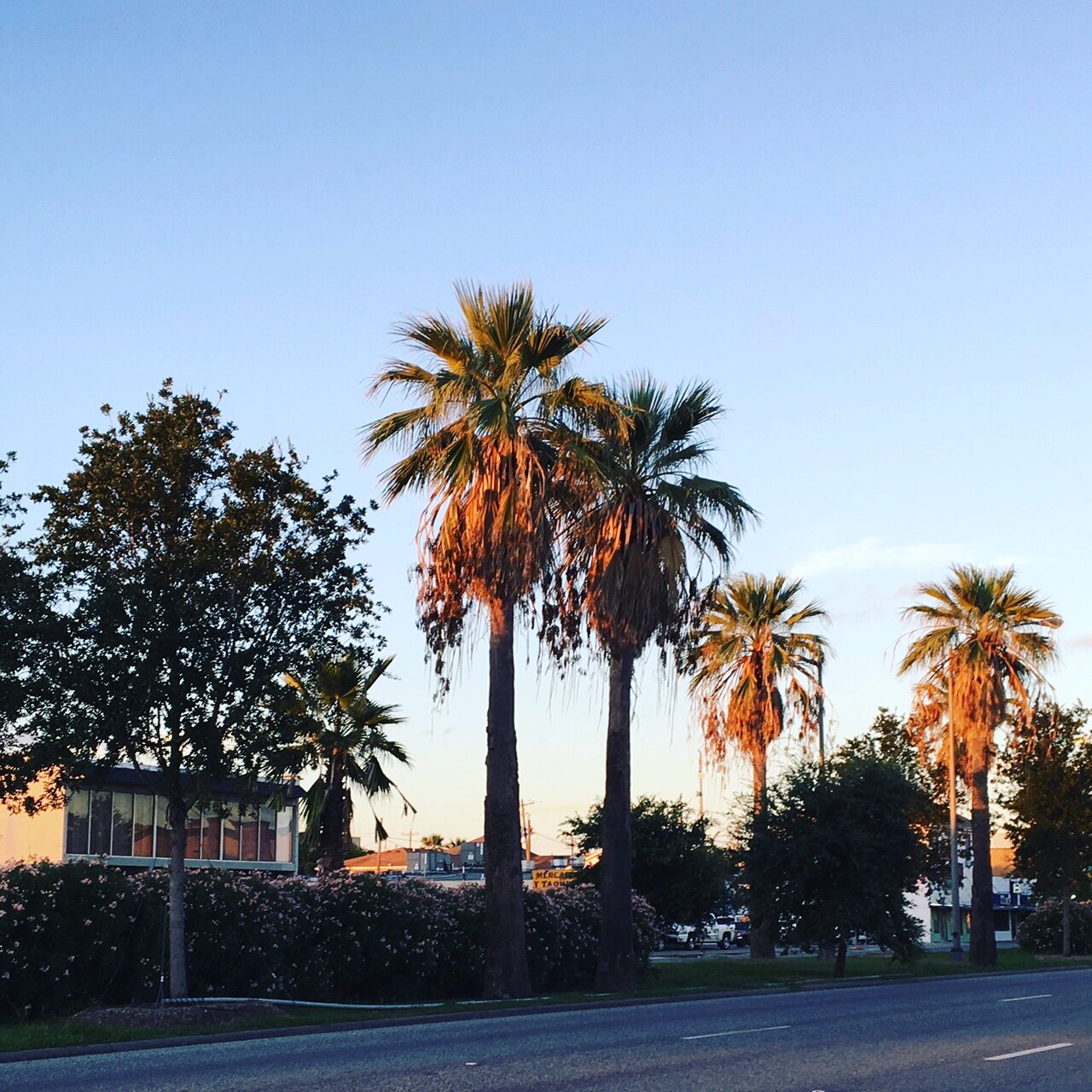Iconic Palms
Tree Story: Our Iconic Palms
Palms! A familiar sight--almost as symbolic of Galveston as our majestic oaks--palms lend a tropical flavor to island life. We take their longevity for granted but recent disease threats have inspired concern, and we’ve lost quite a few big ones around town.
Palms are generally thought of as trees, but they are actually related to grasses, onions and lilies, but in their own distinct family (Arecaceae). Palms typically sport large, evergreen leaves arranged at the top of an unbranched stem, either palmate (“fan-leaved”) or pinnate (“feather-leaved”). They are found everywhere from rainforests to deserts and can adapt to a variety of soil types. Of over 2600 palm species worldwide, most in tropical, subtropical, and warm temperate climates, over 20 can do well locally including many date and fan palms.
Palms are among the most widely known and cultivated plant families. They have been important to humans throughout much of history. Date palms were cultivated over 5000 years ago in the Middle East and are mentioned many times in the Bible and Quran. In addition to landscape use, palms give us food (coconut products, oils, dates, palm syrup, nuts), waxes, rattan cane, raffia, and palm wood.
When properly cared for, palms can be low maintenance landscape plants. To enjoy a healthy palm it is important to choose an appropriate variety, place it in a location appropriate for its mature size, provide appropriate moisture, and follow pruning recommendations. An unfortunate and all-too-common mistake involves pruning. Many specialists recommend minimizing pruning except during transplanting. With any pruning it is best to remove only brown leaves, as green leaves provide food for healthy growth. The “pencil-topping” you see—removal of all but a few new leaves--is harmful to the plant and should be avoided as it tends to weaken the palm and slow its growth.
Any plant under environmental stress is vulnerable to pests and disease. Weather conditions over the past decade have not been exactly helpful, including lengthy droughts, occasional flooding, and the devastating effects of Hurricane Ike’s storm surge. Recently we see diseases that are threatening certain of our local palms and many have already fallen victim. UPDATE March 2021: the full effects of Winter Storm 2021 on our palms won’t be apparent for many months. Don’t trim or prune until May/June. Look for a green “spear” growing at the very top of the palm.
Texas Phoenix Palm Decline is fatal once a palm is infected and no treatments are currently available. The method of transmission is not yet known. Symptoms include premature fruit drop and flower death, along with discoloration of the oldest leaves. It is recommended to remove dead trees to prevent spread of disease. Healthy trees may be treated with frequent injections of antibiotic by a tree care professional. Fan palms are also being affected, but likely by fungal disease, such as Fusarium Wilt which is also fatal.
The best advice is to enjoy the palms you may have and keep them healthy. When planting anew, choose varieties wisely, considering cold tolerance and disease resistance. To learn more about recommended palms for our coastal climate, see an excellent publication online at http://aggie-horticulture.tamu.edu/galveston/educ_programs/Cold-Hardy-Palms.pdf. Follow recommended care and pruning guidelines. And take the Palm Pledge: no more pencil-topping!
“Tree Stories” is an ongoing series of articles about Island trees, tree care, and tree issues. If you have or know of a special tree on Galveston Island that should be highlighted, please email treesforgalveston@gmail.com. Margaret Canavan is a Galveston resident, a Galveston County Master Gardener, and a member of the Galveston Island Tree Conservancy Board.
Hurricane Ike caused the loss of 40,000 trees on Galveston Island. The Galveston Island Tree Conservancy was formed to address that loss and has replaced over 15,000 through grant-funded plantings and giveaways.




